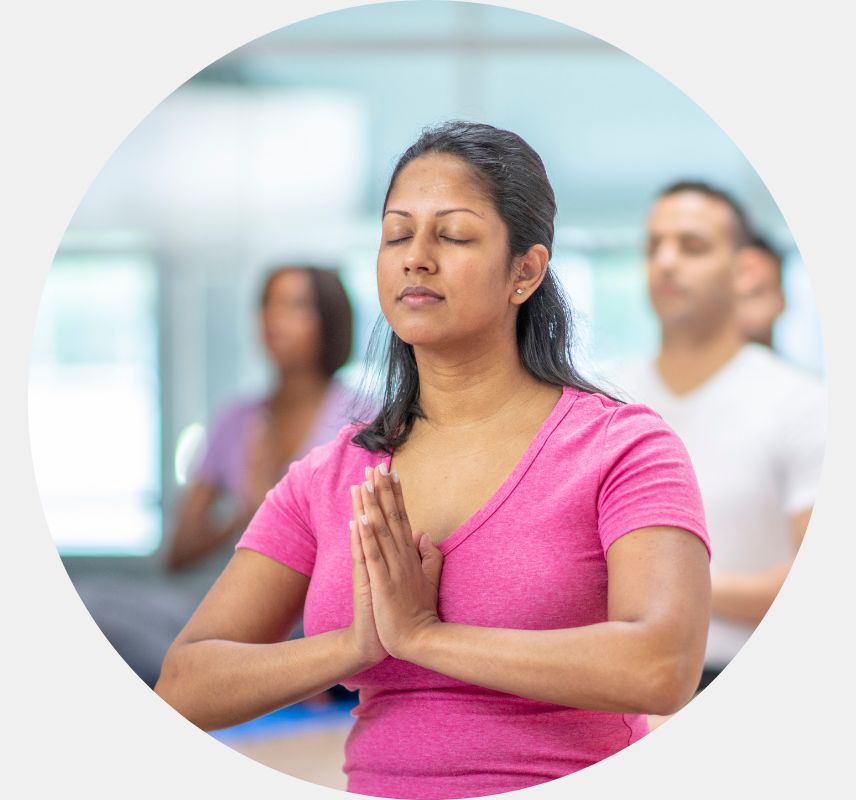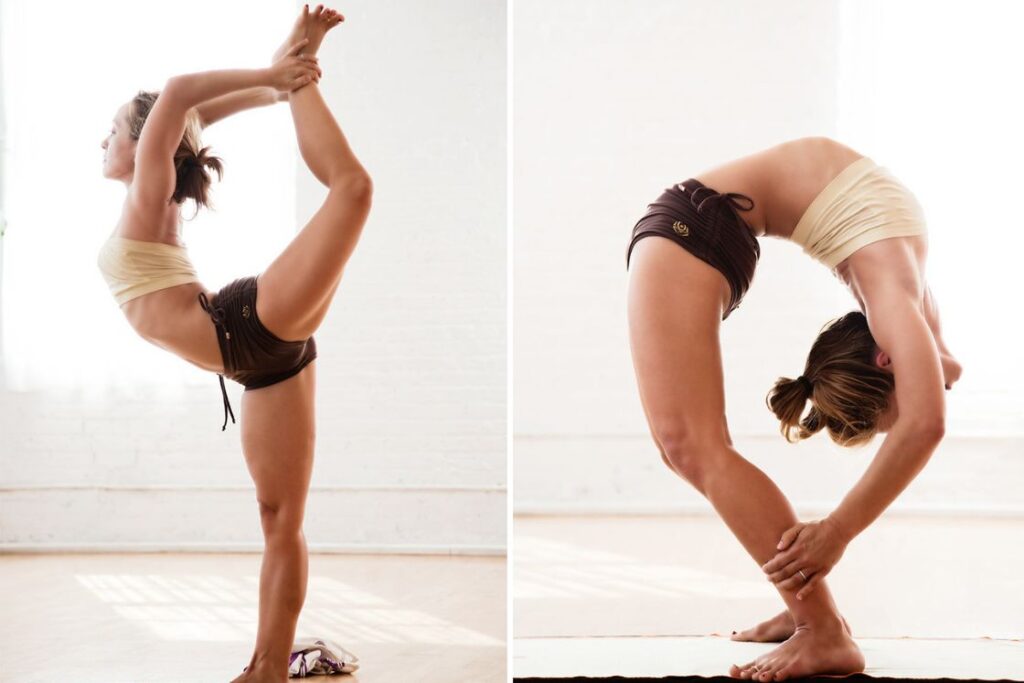
As the world of Ashtanga Yoga continues to expand and evolve, one name that stands out prominently is that of Kino Macgregor.
In this article, we delve into the depths of KinoYoga’s Ashtanga Method to help you determine if it’s the right path for your yogic journey. Whether you’re a seasoned practitioner seeking to deepen your practice or a curious newcomer to the world of yoga, this article aims to shed light on Kino’s unique approach, the teachings she imparts, and the transformative power of her Ashtanga practice.
The Basics of Ashtanga Yoga
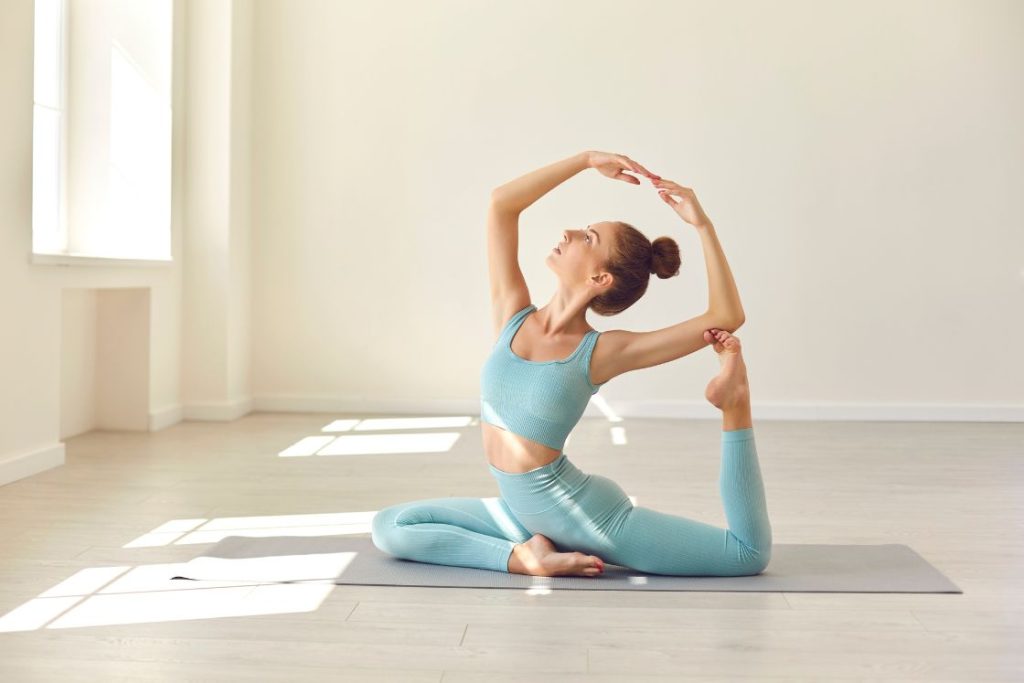
Before delving into the specifics of KinoYoga’s Ashtanga Method, it’s essential to establish a solid understanding of the foundational principles of Ashtanga yoga. This ancient and dynamic form of yoga, often referred to as the “eight-limbed path,” encompasses various aspects of physical and spiritual practice.
1. The Eight Limbs of Ashtanga Yoga: Ashtanga yoga is based on the teachings outlined in Patanjali’s Yoga Sutras, where the eight limbs serve as a comprehensive guide to spiritual and physical well-being. These limbs include Yama (ethical guidelines), Niyama (self-purification and study), Asana (physical postures), Pranayama (breath control), Pratyahara (sense withdrawal), Dharana (concentration), Dhyana (meditation), and Samadhi (union with the divine).
2. Asana Practice: The physical aspect of Ashtanga yoga primarily focuses on the practice of asanas or yoga postures. This practice is characterized by a specific sequence of poses that gradually become more challenging, allowing practitioners to build strength, flexibility, and awareness.
3. Vinyasa: Ashtanga yoga is renowned for its Vinyasa style, where each movement is synchronized with the breath. This dynamic flow creates a meditative and continuous practice that encourages the union of body, breath, and mind.
4. Primary Series: The Ashtanga system is divided into different series of asanas. The Primary Series, or Yoga Chikitsa, is the foundational sequence that purifies and detoxifies the body. It lays the groundwork for deeper spiritual and physical exploration.
5. Mysore Style: In traditional Ashtanga yoga, students practice independently in a Mysore-style setting, where they are given personalized guidance and adjustments by the teacher. This self-paced approach allows individuals to progress at their own rhythm.
Understanding these fundamental aspects of Ashtanga yoga provides a solid foundation for exploring Kino Macgregor’s approach to this practice.
Kino Yoga Ashtanga
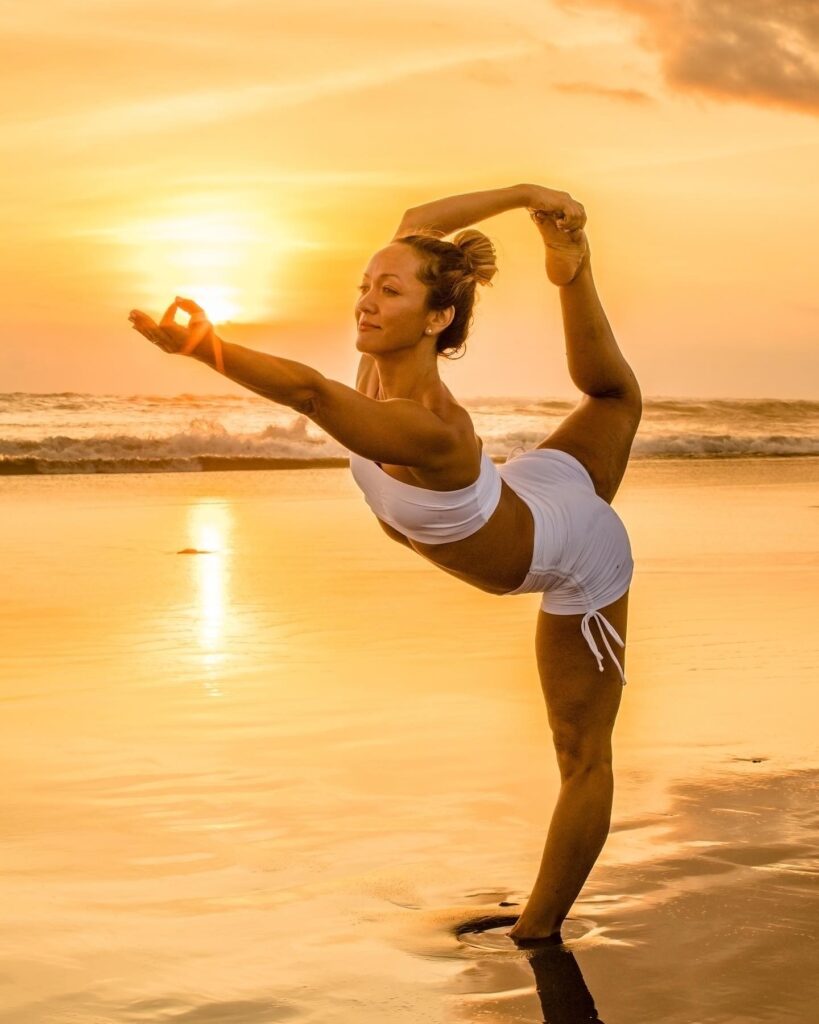
Kino Macgregor‘s unique approach to Ashtanga yoga has garnered a dedicated following and has left a significant impact on the yoga community.
Background and Journey
Kino Macgregor’s journey in Ashtanga yoga is both inspiring and deeply rooted. Certified by the renowned Ashtanga yoga guru Sri K. Pattabhi Jois when she was just 29 years old, Kino has since become a respected authority in this field. Her journey from a dedicated practitioner to an influential teacher is a testament to her passion and commitment to Ashtanga yoga.
Her Unique Approach to Ashtanga
What sets KinoYoga’s Ashtanga Method apart is her ability to make this traditional practice accessible to practitioners of all levels. While she honors the core principles of Ashtanga yoga, Kino brings a modern and inclusive approach to her teaching.
Kino strongly emphasises the breath, a cornerstone of Ashtanga yoga. Her teachings stress the synchronization of breath with movement which creates a harmonious flow. Her emphasis on mindfulness, body awareness, and spiritual growth resonates with students worldwide.
Kino Ashtanga Yoga Teaching Key Elements
- Alignment: Kino places a strong emphasis on alignment, ensuring that students perform each asana with precision and safety. She guides practitioners in finding their optimal alignment, helping them avoid injuries and deepen their practice.
- Progressive Sequencing: Kino’s method follows the structured sequencing of Ashtanga, with a focus on the Primary Series. She believes that mastering the foundational poses of this series is crucial before progressing to more advanced postures.
- Breath: In the Ashtanga tradition, the breath is integral to the practice. Kino’s teaching method revolves around synchronized breath and movement, creating a seamless flow. This approach not only enhances the physical aspects of yoga but also fosters a meditative experience.
- Philosophy: Beyond the physical postures, Kino incorporates the philosophical aspects of yoga into her teaching. She encourages students to explore the spiritual dimensions of the practice, promoting self-discovery and personal growth.
Kino Macgregor’s Ashtanga Method is a harmonious blend of tradition and modern innovation, making it accessible and transformative for practitioners of all backgrounds. Her teachings not only enhance physical strength and flexibility but also nurture the mind and spirit, making yoga a holistic journey.
What to Expect from KinoYoga’s Ashtanga Classes?
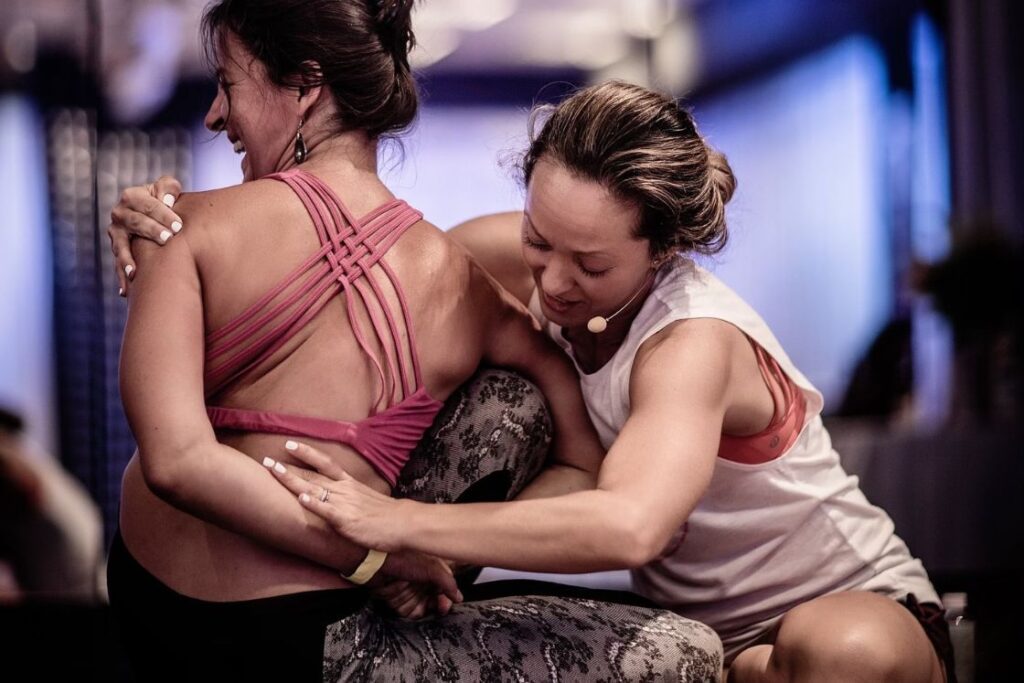
In Kino’s Ashtanga yoga review her classes often revolve around the Ashtanga Primary Series, also known as Yoga Chikitsa. This series is the foundational sequence of Ashtanga yoga, consisting of a specific sequence of postures designed to purify and detoxify the body.
Practising the Ashtanga primary series creates a strong foundation for further advancement in yoga. Kino’s dedication to this series is evident in her teachings, as she guides students through its intricacies with precision and care.
Kino yoga teaching style:
- Emphasis on proper alignment and technique
- Focus on linking breath and movement
- Encourages mindfulness and meditation during practice
- Provides modifications for different levels
Structure of the classes:
- Starts with short chanting/pranayama
- Sun salutations to build heat and prepare for practice
- Primary series postures in a set sequence -held for 5-10 breaths each
- Emphasis on bandhas and drishti
- Finishes with savasana and meditation
Significance of the Primary Series
The primary series serves as a vital component of Kino’s Ashtanga Method. It lays the groundwork for building physical strength, flexibility, and stamina. Moreover, it fosters a deep sense of discipline and consistency in practitioners.
Kino emphasizes that mastering the primary series is a significant milestone in the Ashtanga journey, and it sets the stage for exploring more advanced asanas and series.
Consistency, Discipline, and Mindfulness
Kino’s teaching philosophy revolves around three key principles: consistency, discipline, and mindfulness. She encourages her students to practice regularly and with dedication, as it is through consistent effort that progress is made. Discipline plays a crucial role in maintaining a structured practice that honors the tradition of Ashtanga yoga. Additionally, mindfulness is at the core of Kino’s classes. She emphasizes the importance of being present in each moment of the practice, using the breath as a guiding force.
What You’ll Learn as a Beginner in 2023?
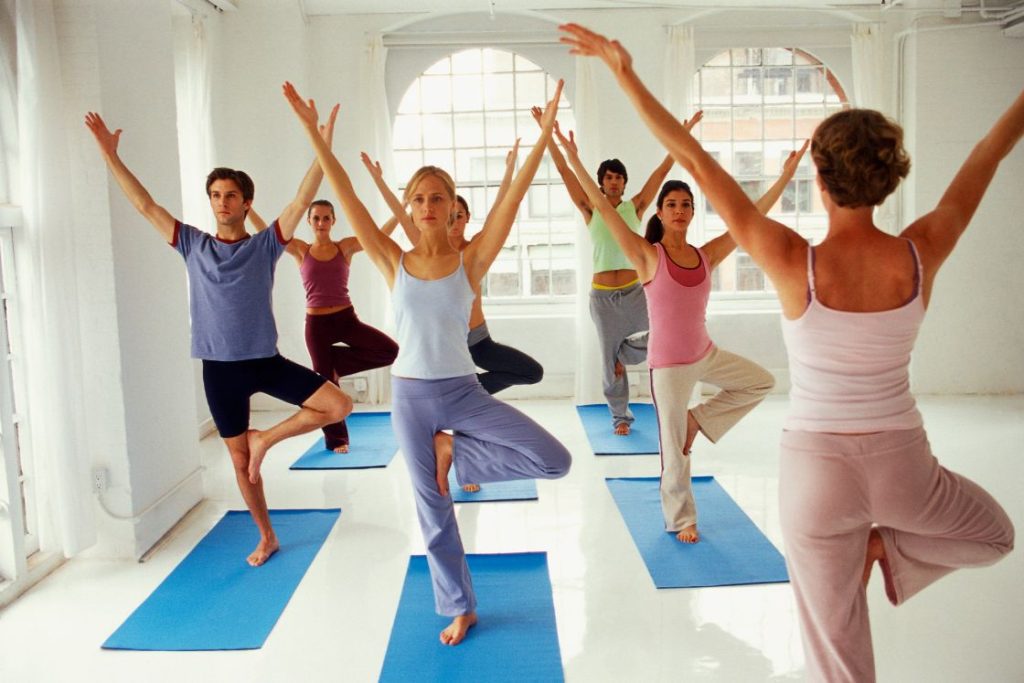
A beginner can expect these from KinoYoga’s Ashtanga classes:
- Foundational standing and seated postures – You will learn foundational poses and sequences like sun salutation A and B, warrior poses, balances, forward bends, twists, and backbends in a gradual, safe progression.
- Proper breathing techniques – You’ll practice coordinating breath and movement, such as inhaling on backward bends and exhaling on forward folds. Deep, controlled breathing is emphasized.
- How to connect breath and movement – The vinyasa style links each posture to either an inhale or exhale to create flow. You’ll learn how to synchronize them.
- Using bandhas and focal points – Bandhas involve contracting the abdomen and pelvic floor to energize the body. Drishti means gazing at focal points to enhance concentration.
- Modifications to make poses accessible – Kino provides variations with props like blocks and straps to accommodate different levels and prevent injury.
- How to build strength and flexibility safely – The sequences are designed to progressively open the body and build internal heat without pushing beyond your limits.
Kino Yoga Philosophy
Kino Macgregor’s journey in Ashtanga yoga is not just about physical postures; it’s deeply rooted in philosophical beliefs and a holistic approach to the practice.
1. Holistic Approach: Kino embraces a holistic approach to yoga, recognizing that it extends far beyond the physical realm. She believes that yoga is a tool for self-realization and transformation, encompassing the body, mind, and spirit. This holistic perspective infuses her teachings, encouraging students to explore the profound connections between their inner and outer worlds.
2. Emphasis on the Spiritual: Kino strongly emphasises the spiritual aspects of Ashtanga yoga. She views the practice as a spiritual journey that enables practitioners to connect with their inner selves and the divine.
Kino encourages her students to cultivate self-awareness, mindfulness, and introspection on the mat. Through the practice of Ashtanga yoga, she believes individuals can unlock their inner potential and attain a deeper sense of purpose and fulfilment.
3. Self-Awareness: Central to Kino’s teaching philosophy is self-awareness. She guides her students to explore their inner landscapes, fostering a profound sense of self-discovery.
Kino believes that by developing self-awareness, individuals can overcome physical and mental obstacles, ultimately leading to personal growth and transformation. This heightened self-awareness extends beyond the mat and into daily life, allowing students to navigate challenges with grace and resilience.
In Kino Macgregor’s Ashtanga Method, the practice of yoga transcends the physical postures and embraces a philosophical and spiritual dimension. Her holistic approach, emphasis on spirituality, and dedication to self-awareness create a transformative experience for her students.
KinoYoga Ashtanga FAQs
Kino’s teaching style is rooted in the Ashtanga yoga tradition but encompasses a holistic approach that includes physical postures, breath control, and spiritual growth.
Kino provides resources for practitioners of all levels, including beginners. Her guidance and accessible approach make it suitable for those new to Ashtanga yoga.
Kino infuses her teachings with a strong emphasis on spirituality, self-awareness, and mindfulness, going beyond the physical practice.
Yes, Kino offers classes and guidance on the Ashtanga primary series, which forms the foundation of her teachings.
Kino’s classes emphasize consistency, discipline, and mindfulness. They include physical postures, pranayama (breath control), and meditation.
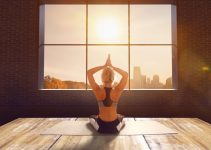
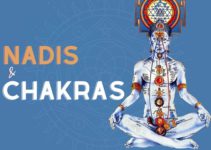
![Best Yoga Blocks To Support and Balance Your Yoga Practice [2021] Best Yoga Blocks To Support and Balance Your Yoga Practice [2021]](https://www.fitsri.com/wp-content/uploads/2021/12/best-yoga-blocks-211x150.jpg)
